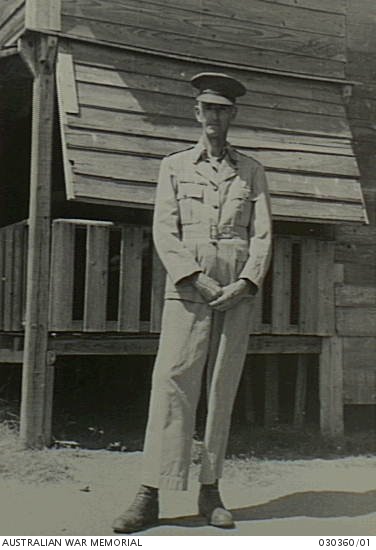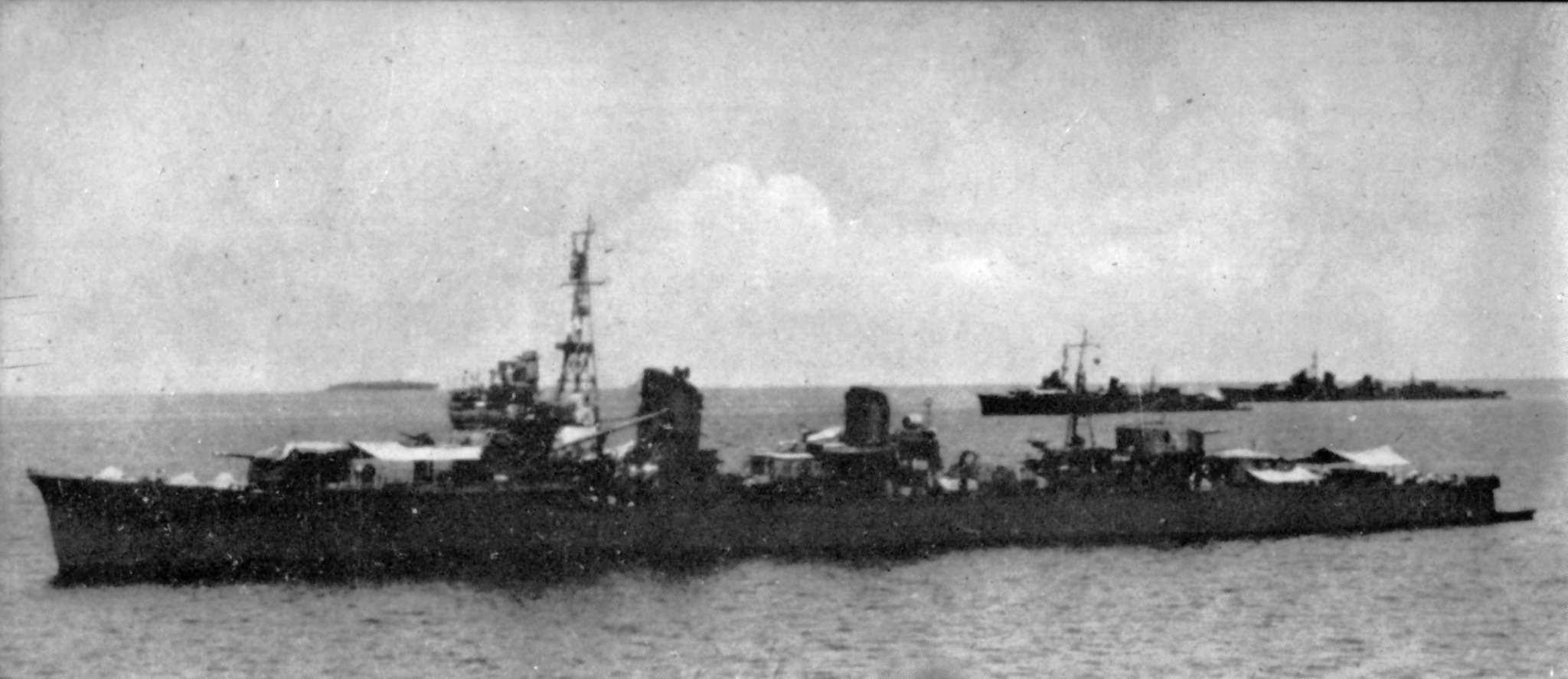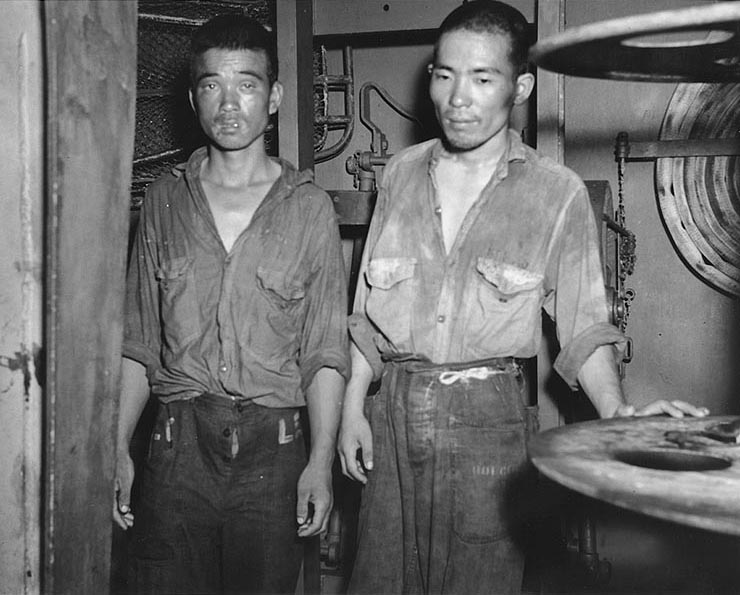|
Battle Of Ambon
The Battle of Ambon (30 January – 3 February 1942) occurred on the island of Ambon in the Dutch East Indies (now Indonesia), as part of the Japanese offensive on the Dutch colony during World War II. In the face of a combined defense by Dutch and Australian troops, Japanese forces conquered the island and its strategic airfield in several days. In the aftermath of the fighting, a major massacre of many Dutch and Australian prisoners of war (POW) followed suit. Background Ambon is located in the Maluku (Moluccas) islands, just south of the much larger island of Seram (Ceram). Ambon has what might be described as a "figure eight" or "hourglass" shape, and consists of two peninsulae separated by a narrow isthmus, with long narrow bays on either side of the isthmus. The key airport at Laha is in the west of the Hitu Peninsula – northern part of the island – facing Ambon Bay. The town of Ambon is at the opposite side of the bay, on the southern part of the island, Laitimor P ... [...More Info...] [...Related Items...] OR: [Wikipedia] [Google] [Baidu] |
Takeo Itō
was a general in the Imperial Japanese Army during World War II. Biography Takeo Itō was born in the city of Fukuoka in the Fukuoka prefecture The commanding officer of the IJA 228th Infantry Regiment at the start of the Second Sino-Japanese War, he assumed command of 114th Infantry Regiment in August 1940. Upon attaining the rank of major general on August 25, 1941, Itō was given command of the IJA 38th Division's infantry group, which was the primary Japanese division in the invasion of Hong Kong. In early 1942, Itō was reassigned to an independent command in his own name, the "Itō Detachment", consisted mainly of 228th Infantry Regiment, 38th Infantry Division and the 1st Kure SNLF, which took part in the Battle of Ambon in the Dutch East Indies (30 January–3 February 1942), and in the occupation of Timor. All of these campaigns were characterized by extreme ruthlessness and the massacre of prisoners. In November, Itō, along with one regiment of the 38th Division, was ... [...More Info...] [...Related Items...] OR: [Wikipedia] [Google] [Baidu] |
23rd Brigade (Australia)
The 23rd Brigade was a brigade of the Australian Army. It was briefly raised in 1912 as a Australian Army Reserve, Militia formation providing training as part of the Conscription in Australia, compulsory training scheme. Later, it was re-formed in July 1940 for service during the Second World War, the brigade was initially a formation of the Second Australian Imperial Force assigned to the 8th Division (Australia), 8th Division; however, after its sub units were captured by the Japanese in 1942 it was reformed with Citizens Military Force, Militia battalions and was mainly used in a garrison role around Darwin, Northern Territory, Darwin, in the Northern Territory, until late in the war when it was committed to the fighting against the Japanese on Bougainville campaign, Bougainville. It was disbanded in 1946. History Early formation The 23rd Brigade briefly existed as Australian Army Reserve, Militia brigade that was partially formed in 1912, following the introduction of the C ... [...More Info...] [...Related Items...] OR: [Wikipedia] [Google] [Baidu] |
Japanese Destroyer Tokitsukaze (1939)
was the tenth vessel to be commissioned in the 19-vessel destroyers built for the Imperial Japanese Navy in the late-1930s under the Circle Three Supplementary Naval Expansion Program (''Maru San Keikaku''). Background The ''Kagerō''-class destroyers were outwardly almost identical to the preceding , with improvements made by Japanese naval architects to improve stability and to take advantage of Japan’s lead in torpedo technology. They were designed to accompany the Japanese main striking force and in both day and night attacks against the United States Navy as it advanced across the Pacific Ocean, according to Japanese naval strategic projections. Despite being one of the most powerful classes of destroyers in the world at the time of their completion, only one survived the Pacific War. Their crew numbered 240 officers and enlisted men. The ships measured overall, with a beam of and a draft of . They displaced at standard load and at deep load.Whitley, pp. 200– ... [...More Info...] [...Related Items...] OR: [Wikipedia] [Google] [Baidu] |
Japanese Destroyer Yukikaze (1939)
was a in service with the Imperial Japanese Navy during World War II. She was the only member of her class to survive the war, and did so without suffering any major damage. Following the war, the ship was transferred to the Republic of China Navy, where she was renamed ''Dan Yang'' ( DD-12) and served until 1966, before being scrapped in 1970. Design and description The ''Kagerō'' class was an enlarged and improved version of the preceding of destroyers. Their crew numbered 240 officers and enlisted men. The ships measured overall, with a beam of and a draft of . They displaced at standard load and at deep load.Whitley, pp. 200–01 The ships had two Kampon geared steam turbines, each driving one propeller shaft, using steam provided by three Kampon water-tube boilers. The turbines were rated at a total of for a designed speed of . The ships had a range of at a speed of .Jentschura, Jung & Mickel, p. 148 The main armament of the ''Kagerō'' class consisted of six ... [...More Info...] [...Related Items...] OR: [Wikipedia] [Google] [Baidu] |
Japanese Destroyer Hayashio
was the fifth vessel to be commissioned in the 19-vessel destroyers built for the Imperial Japanese Navy in the late-1930s under the Circle Three Supplementary Naval Expansion Program (''Maru San Keikaku''). Background The ''Kagerō''-class destroyers were outwardly almost identical to the preceding light cruiser-sized , with improvements made by Japanese naval architects to improve stability and to take advantage of Japan's lead in torpedo technology. They were designed to accompany the Japanese main striking force and in both day and night attacks against the United States Navy as it advanced across the Pacific Ocean, according to Japanese naval strategic projections. Despite being one of the most powerful classes of destroyers in the world at the time of their completion, only one survived the Pacific War. '' Hayashio'', built at the Uraga Dock Company, was laid down on 30 June 1938, launched on 19 April 1939 and commissioned on 31 August 1940. Operational history At ... [...More Info...] [...Related Items...] OR: [Wikipedia] [Google] [Baidu] |
Japanese Destroyer Oyashio
was the fourth vessel to be commissioned in the 19-vessel destroyers built for the Imperial Japanese Navy in the late 1930s under the 3rd Naval Armaments Supplement Programme (Japan, 1937), Circle Three Supplementary Naval Expansion Program (''Maru San Keikaku''). Background The ''Kagerō''-class destroyers were outwardly almost identical to the preceding light cruiser-sized , with improvements made by Japanese naval architects to improve stability and to take advantage of Japan's lead in torpedo technology. They were designed to accompany the Japanese main striking force and in both day and night attacks against the United States Navy as it advanced across the Pacific Ocean, according to Japanese naval strategic projections. Despite being one of the most powerful classes of destroyers in the world at the time of their completion, only one survived the Pacific War. '' Oyashio'', built at the Maizuru Naval Arsenal, was laid down on 29 March 1938, launched on 29 November 1938 a ... [...More Info...] [...Related Items...] OR: [Wikipedia] [Google] [Baidu] |
Japanese Destroyer Kuroshio
was the third vessel to be commissioned in the 19-vessel destroyers built for the Imperial Japanese Navy in the late-1930s under the 3rd Naval Armaments Supplement Programme (Japan, 1937), Circle Three Supplementary Naval Expansion Program (''Maru San Keikaku''). Background The ''Kagerō''-class destroyers were outwardly almost identical to the preceding light cruiser-sized , with improvements made by Japanese naval architects to improve stability and to take advantage of Japan’s lead in torpedo technology. They were designed to accompany the Japanese main striking force and in both day and night attacks against the United States Navy as it advanced across the Pacific Ocean, according to Japanese naval strategic projections. Despite being one of the most powerful classes of destroyers in the world at the time of their completion, only one survived the Pacific War. '' Kuroshio'', built at the Fujinagata Shipyards in Osaka, was laid down on 31 August 1937, launched on 25 Octob ... [...More Info...] [...Related Items...] OR: [Wikipedia] [Google] [Baidu] |
Japanese Destroyer Natsushio
was the sixth vessel to be commissioned in the 19-vessel destroyers built for the Imperial Japanese Navy in the late-1930s under the Circle Three Supplementary Naval Expansion Program (''Maru San Keikaku''). Background The ''Kagerō''-class destroyers were outwardly almost identical to the preceding light cruiser-sized , with improvements made by Japanese naval architects to improve stability and to take advantage of Japan’s lead in torpedo technology. They were designed to accompany the Japanese main striking force and in both day and night attacks against the United States Navy as it advanced across the Pacific Ocean, according to Japanese naval strategic projections. Despite being one of the most powerful classes of destroyers in the world at the time of their completion, only one survived the Pacific War. '' Natsushio'', built at the Fujinagata Shipyards, was laid down on 9 December 1937, launched on 23 February 1939 and commissioned on 31 August 1940. Operational h ... [...More Info...] [...Related Items...] OR: [Wikipedia] [Google] [Baidu] |
Japanese Destroyer Michishio
was the third of ten s built for the Imperial Japanese Navy in the mid-1930s under the Circle Two Supplementary Naval Expansion Program (''Maru Ni Keikaku''). History The ''Asashio''-class destroyers were larger and more capable that the preceding , as Japanese naval architects were no longer constrained by the provisions of the London Naval Treaty. These light cruiser-sized vessels were designed to take advantage of Japan’s lead in torpedo technology, and to accompany the Japanese main striking force and in both day and night attacks against the United States Navy as it advanced across the Pacific Ocean, according to Japanese naval strategic projections. Despite being one of the most powerful classes of destroyers in the world at the time of their completion, none survived the Pacific War. ''Michishio'', built at the Fujinagata Shipyards in Osaka was laid down on 5 November 1935, launched on 15 March 1937 and commissioned on 31 October 1937. Operational history On commis ... [...More Info...] [...Related Items...] OR: [Wikipedia] [Google] [Baidu] |
Japanese Destroyer Asashio (1936)
was the lead ship of the ten s built for the Imperial Japanese Navy in the mid-1930s under the Circle Two Program (''Maru Ni Keikaku''). History The ''Asashio''-class destroyers were larger and more capable that the preceding , as Japanese naval architects were no longer constrained by the provisions of the London Naval Treaty. These light cruiser-sized vessels were designed to take advantage of Japan's lead in torpedo technology, and to accompany the Japanese main striking force and in both day and night attacks against the United States Navy as it advanced across the Pacific Ocean, according to Japanese naval strategic projections. Despite being one of the most powerful classes of destroyers in the world at the time of their completion, none survived the Pacific War. ''Asashio'', built at the Sasebo Naval Arsenal was laid down on 7 September 1935, launched on 16 December 1936 and commissioned on 31 August 1937. During trials, ''Asashio'' experienced steering problems ... [...More Info...] [...Related Items...] OR: [Wikipedia] [Google] [Baidu] |
Japanese Destroyer Ōshio
was the second of ten s built for the Imperial Japanese Navy in the mid-1930s under the Circle Two Supplementary Naval Expansion Program (''Maru Ni Keikaku''). History The ''Asashio''-class destroyers were larger and more capable that the preceding , as Japanese naval architects were no longer constrained by the provisions of the London Naval Treaty. These light cruiser-sized vessels were designed to take advantage of Japan’s lead in torpedo technology, and to accompany the Japanese main striking force and in both day and night attacks against the United States Navy as it advanced across the Pacific Ocean, according to Japanese naval strategic projections. Despite being one of the most powerful classes of destroyers in the world at the time of their completion, none survived the Pacific War. ''Ōshio'', built at the Maizuru Naval Arsenal was laid down on 5 August 1936, launched on 19 April 1937 and commissioned on 31 October 1937. Operational history At the time of the ... [...More Info...] [...Related Items...] OR: [Wikipedia] [Google] [Baidu] |
Japanese Cruiser Jintsū
was the second vessel completed in the three-ship light cruiser in the Imperial Japanese Navy (IJN), named after the Jinzū River in the Gifu and Toyama prefectures of central Japan. She was active in World War II in various campaigns including the Japanese invasion of the Philippines, the Battle of the Java Sea, and Battle of Midway. On 13 July 1943 in the Battle of Kolombangara, she was discovered during a night attack by American ships and sunk in combat. Background The ''Sendai''-class vessels were part of the Eight-eight fleet program, with the first four of eight planned vessels authorized in 1921. However, due to the Washington Naval Treaty, the final four vessels were never authorized, and the fourth vessel was cancelled during construction, as the Japanese Navy decided to concentrate on heavy cruiser procurement instead.Stille, '' Imperial Japanese Navy Light Cruisers 1941–45 '', page 27–30; ''Jintsū'', as with other vessels of her class, was intended for use ... [...More Info...] [...Related Items...] OR: [Wikipedia] [Google] [Baidu] |






